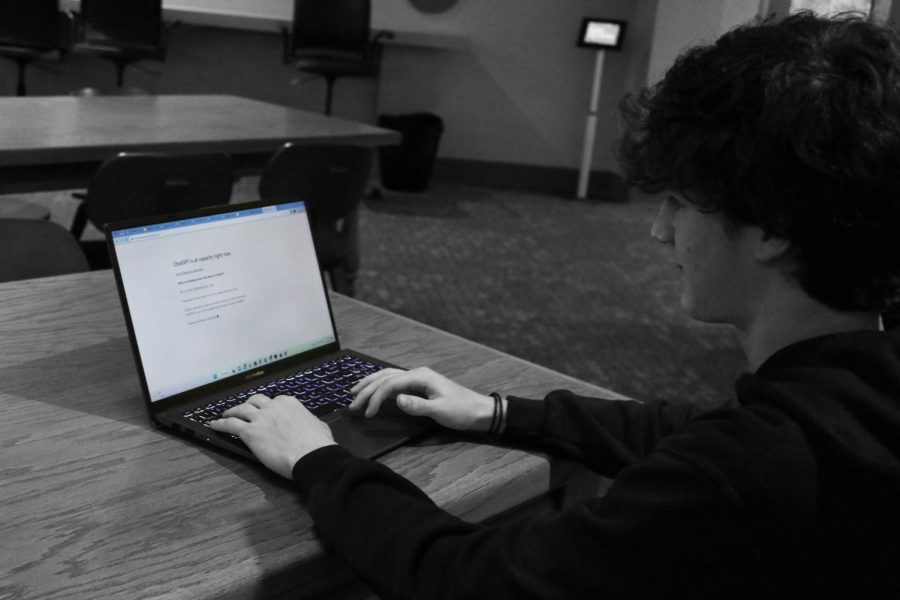A good essay is one that effectively communicates the writer’s ideas and arguments in a clear and concise manner. It is a blend of well-researched information, personal anecdotes and expert insights that present a well-rounded perspective on the topic.
This description of what makes a strong essay was generated by OpenAI’s new ChatBot, ChatGPT, a tool which, when in the right hands, has the potential to formulate a beautifully crafted essay in less than a minute.
ChatGPT, short for Generative Pre-trained Transformer, uses machine learning to generate human-like text based on a given prompt. The program was originally made to mimic human conversation, but because every response it gives is original, some students have been able to ask the program to write their essays for them.
“I’ve seen some kids using it for their writing assignments in class,” senior Julien Pham-Davis said. “I’ve even messed around with it a bit on my own time. I haven’t used it for any school work, though.”
With the shift from paper to digital Advanced Placement exams, some teachers have been increasing their load of digital work to get the student-body accustomed to working online. While this practice will certainly make completing assignments quicker and easier, it has also led some faculty members to worry about the ways in which this technology privilege can be abused.
“[It’s] high on our discussion list,” English teacher Linder O’Rourke said. “As soon as we came back from Christmas break, our technology department began discussing ways to address the situation.”
The school has yet to make an official statement on the usage of the ChatGPT language model among students, but the faculty has already begun taking precautionary measures to limit the use of the tool on school assignments.
“We do have some anti-plagiarism tools to control it,” O’Rourke said. “That being said, I don’t think they are going to be able to keep up with AI technology.”
O’Rourke’s prediction seems to be accurate as OpenAI has announced GPT4, a newer and more advanced version of GPT3, the language model that ChatGPT uses. Despite this, O’Rourke believes that ChatGPT has the potential to enhance students’ education if used properly. She acknowledges that it can be a valuable tool, but could be easily misused when it comes to at-home work.
“As an English teacher, I am always looking for ways to improve my student’s writing skills,” she said. “It’s important that we address these concerns and ensure academic integrity while also keeping in mind the true value of this innovative technology.”
From the student body’s perspective, opinions on the usage of ChatGPT are a mixed bag. Junior Max Stammel thinks using ChatGPT should be regarded as cheating.
“It’s not the same as using a thesaurus or a grammar checker,” he said. “It’s almost like having someone else do the work for you. I can see how it could be helpful in some situations, but I think it’s important to draw a line between what is and isn’t acceptable.”
As a result, Stammel believes this to be an issue the school board should take a strict stance on.
“I think [the school] should implement policies that limit [ChatGPT’s] use,” he said. “It isn’t fair to the people who actually put in effort if some students are just gonna be able to use ChatGPT to create perfectly-written essays.”
Pham-Davis on the other hand believes that ChatGPT falls into something of a “moral gray area.”
“It’s kind of just like having a personal assistant for your writing assignments,” he said. “Plus, it’s not like it’s actually able to do the work for you. It’s actually pretty inaccurate sometimes, so it’s much more effective when it’s just used for suggestions.”
The question of academic integrity continues to be a prevalent issue, but as the world evolves and technology takes a larger grasp on education, it’s likely that chatbots will become somewhat unavoidable in the near future.
“As educators, we must wait to see what decision the school board makes on this issue,” O’Rourke said. “In the meantime, we should approach ChatGPT with an open mind and consider how it can be used to enhance the learning experience for our students.”




